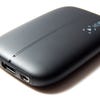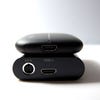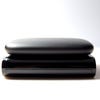Elgato Game Capture HD60 review
1080p60 gameplay capture for the YouTube generation.
The new wave of consoles from Sony and Microsoft gives everyone the tools to record, share and even live-broadcast their gameplay. It's all integrated into the hardware and has no performance impact whatsoever. The only problem is, you're limited to 720p video at 30fps, quality can be somewhat questionable, and porting files to your computer to edit them can be a bit of an ordeal. The new Elgato Game Capture HD60 aims to provide an alternative that replicates and improves on the 'stock' solution, while at the same time offering a tempting upgrade path to owners of the first-gen Game Capture HD.
So what's the major hook with the new HD60? First and foremost is the unit's ability to record 1080p video at 60fps direct from the HDMI output of the consoles. That's a 2.25x boost to resolution over the quality offered by Xbox One and PlayStation 4 encoders, and at twice the frame-rate. At the 'best' quality setting, the HD60 encodes video at 40mbps - and that's about eight times higher than the 5mbps produced by the console's internal encoder. The HD60's predecessor, the classic Elgato Game Capture HD, also supports 1080p input, but only at 30fps - every other frame is discarded when you capture at full HD resolution. Full frame-rate, full HD - that's the HD60's major selling point.
It's an important distinction. In the here and now, 1080p30 support on the existing Elgato is absolutely fine for the most part, bearing in mind that platforms like YouTube don't support higher frame-rates anyway. However, based on a recent announcement, that's all set to change. To take advantage of the new support, you'll either need to buy the HD60 or else drop console resolution down to 720p - the old Elgato records 720p60 just fine, but it's not really the best way to play your games.
So to cut to the chase, does the quality level cut it? After all, the figures involved in 1080p60 compression are frightening. At 1080p60, around 334MB (or 2.6gbps if you like) of uncompressed visual data is output from the HDMI port every second. The HD60's in-built hardware h.264 encoder somehow manages to squeeze that down to a tiny fraction of that mammoth level of bandwidth, allowing the data to transfer from the box to your PC or Mac on a common or garden USB 2.0 connection. Now, 40mbps is a lot of bandwidth for the h.264 codec, but cheap hardware encoding processors typically don't make the most of it, resulting in some fairly ugly results on challenging scenes. Could the more modern encoder in the HD60 do better?
To our great surprise, the HD60 handed in generally excellent results, regardless of the challenges we threw at it. On slow moving games - particularly those with muted colour schemes - 40mbps should give you results virtually indistinguishable from the raw data flooding out of the HDMI port. However, on more action-packed, colourful games, there is less commonality from one frame to the next, making the task of compressing the video much more difficult.
We chose a bunch of games designed to test the HD60's encoder across a range of scenarios. To check off the 'easier' content, we played through a small section of The Last of Us Remastered - dark rooms with not much movement. We then stepped up a notch with Assassin's Creed 4 on PS4 - a 30fps game, but one rich in high-frequency detail, something that poorer quality encoders wouldn't like too much at all. From there we ramped up the stakes still further with a range of high-motion 60fps titles - Forza Motorsport 5, Call of Duty Ghosts, Titanfall, Killzone Shadow Fall and finally, the extremely challenging Resogun.
As you can see from the video and the comparison zoomers below, there is clearly a degradation of quality compared to the raw video output, but quality still holds up rather well overall and isn't really noticeable in motion. Our high-end lossless 24-bit RGB captures occupy anything from 60MB/s to 200MB/s (480mbps to 1.6gbps) that's depending on how well they compress from frame to frame. The HD60's outputs are locked at just 40mbps at its best setting - that's 5MB/s.
There's a straight trade here - the loss of some quality in exchange for vastly smaller file-sizes, easier portability of data and much simpler editing. We can't really use compressed video in the Digital Foundry workflow, but for general capture and YouTube edits, the trade is clearly worth making - you're getting very decent quality using a fraction of the bandwidth. To illustrate the quality level, all of the test assets we used in this piece are available for you to download.
So with the unit's core functionality upgrade validated, what else is there to tempt prospective buyers? Well, one of the most impressive things about the original Elgato was its tiny footprint, and the fact that it was powered entirely from the USB 2.0 port - with no additional power supply required. The HD60 trumps its predecessor with a reduction both in dimensions and weight, while the fingerprint-attracting glossy plastics replaced with an improved matte finish.

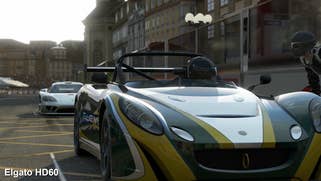
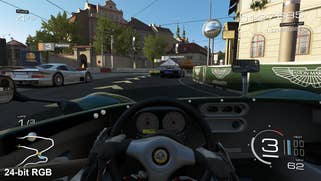



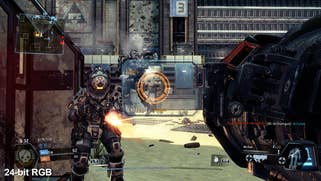
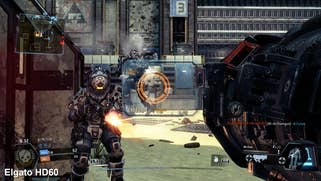
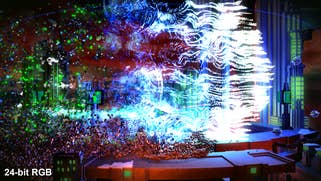
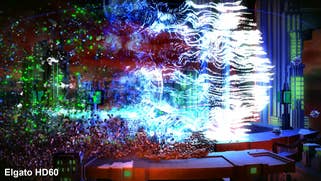




Despite the increased power demands of 1080p60 capture, it's still PSU-free, making it a good option for capture on the go when paired with a fairly decent laptop. The only compromise compared to its predecessor is that there's no analogue HD support - meaning no way to hook up a PlayStation 3. Google 'PS3 HDCP decryption' and you should be able to find a low-cost solution for what is now a minor hurdle to overcome.
The Elgato software has also been upgraded. All the old favourites are still there - you can specify a manual recording, or else simply leave the software running and use the flashback option to scoot back through your gameplay session and extract the footage you want. However, there's some intriguing new stuff too: Stream Command (currently PC only - a Mac update is forthcoming) allows you to capture 1080p60 footage, while at the same time live-broadcasting lower resolution video to Twitch (and your broadcasts can be archived now too). The streaming component appears to be a software solution, necessitating a fairly meaty PC - Elgato recommends a second-gen Core i7 or better. Meanwhile, multiple audio tracks can be added to video too - good for separating voiceover commentary from game audio, for example.
The overall sense you get from the new HD60 is that it's a well thought-out evolution of its predecessor. The portability and feature-set of the Game Capture HD has been ported over wholesale to the new device, which in turn has evolved to accommodate the capabilities of the new wave of console hardware. The in-built streaming and capture facilities of the Xbox One and PlayStation 4 are fine as far as they go, but if you're disappointed in any way with the quality, the HD60 is well worth investigating - it has a quality level and feature-set that punches well above its weight.
Elgato Game Capture HD60 - the Digital Foundry verdict
The Elgato Game Capture HD60 is an excellent example of what was once high-end 'prosumer' technology - in this case 1080p60 HD capture - filtering down into an accessible consumer-level device. Based on specs alone, we went into this review expecting mediocre results in terms of image quality at 1080p60, but came away genuinely impressed at just how well the device acquits itself across a range of challenging material. Acquiring and compressing so much visual data is no walk in the park - Elgato has made the right trades in balancing video quality with ease of use and we suspect that it'll become the weapon of choice for YouTubers looking to get the most out of the new 60fps support that's hopefully coming soon.
Also impressive is the price-point. Bearing in mind that professional 1080p60 kit costs upwards of £1000/$1000, the Elgato's relatively minuscule £139.99/$179.99 cost is remarkable value overall, especially when you factor in the support for live-streaming and all the other software enhancements. The software does seem to be a bit of a work in progress though - the initial tools we were sent had some nasty bugs. Thankfully the most impactful of all - an audio sync issue importing files into editing tools - was resolved the day before this review went to press, but there are still some oddities - for example, some confusion on limited and full-range RGB handling on PS4.
We wouldn't be surprised to see further bugs manifest, but updates seem to be coming in thick and fast, and based on the latest software we tested, the Game Capture HD60 remains worthy of recommendation. It's a high-quality, feature-rich product that offers all the capture and streaming functionality you could ask for. Given time - principally for the YouTube 60fps support to roll out properly - we suspect the HD60 will prove just as indispensable as its predecessor.


